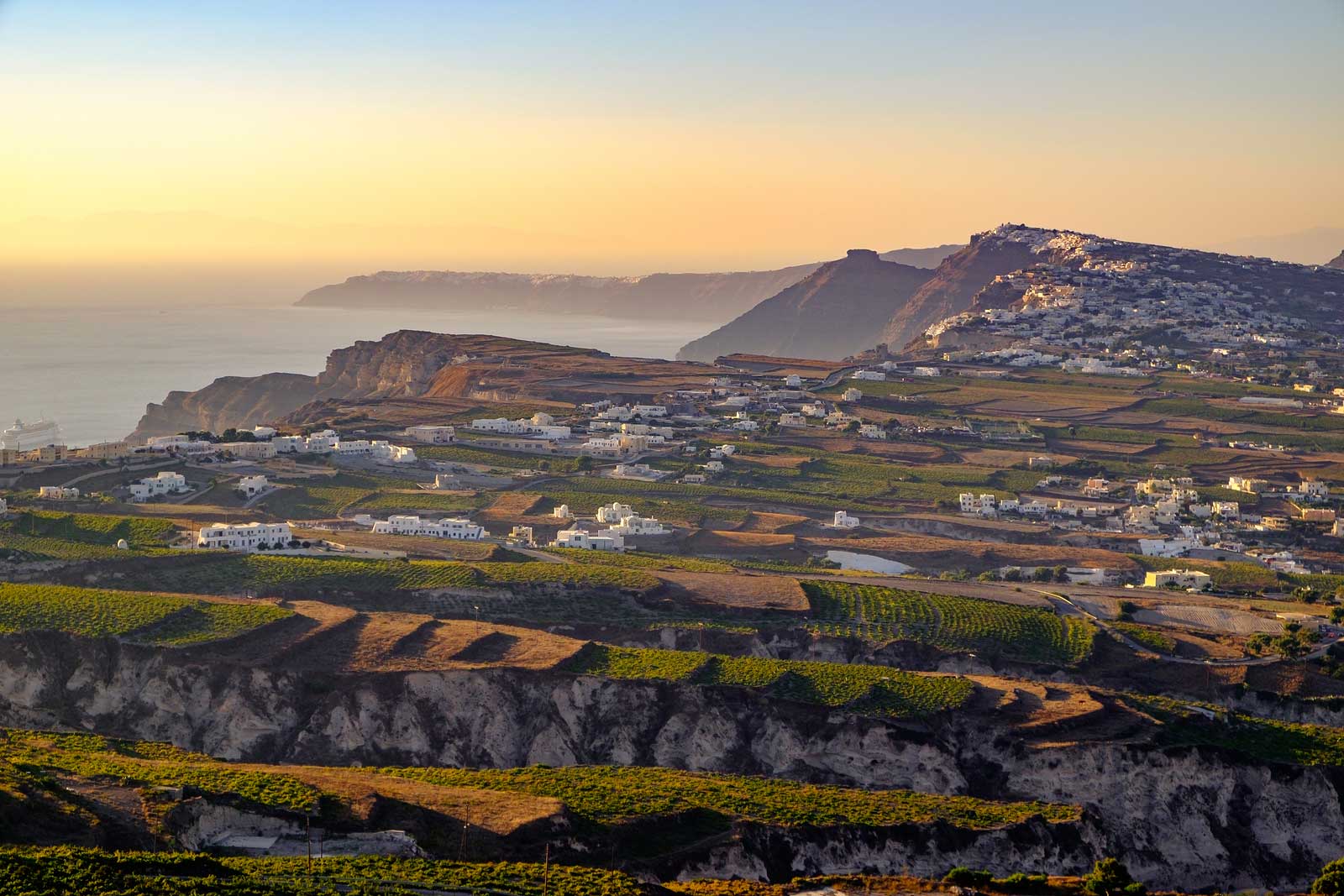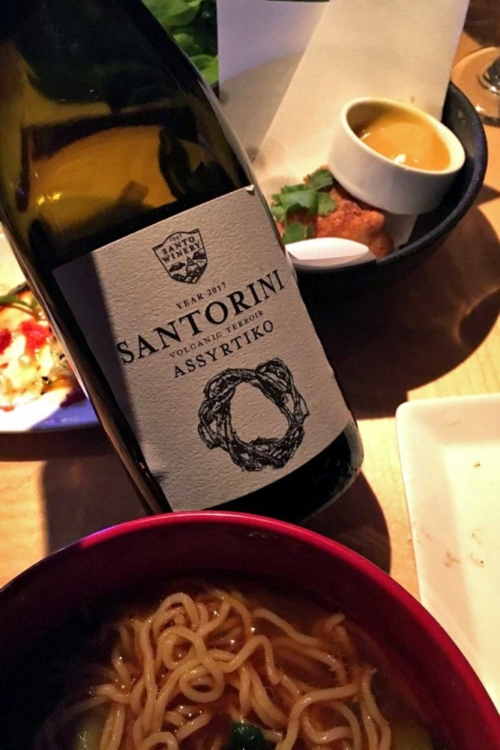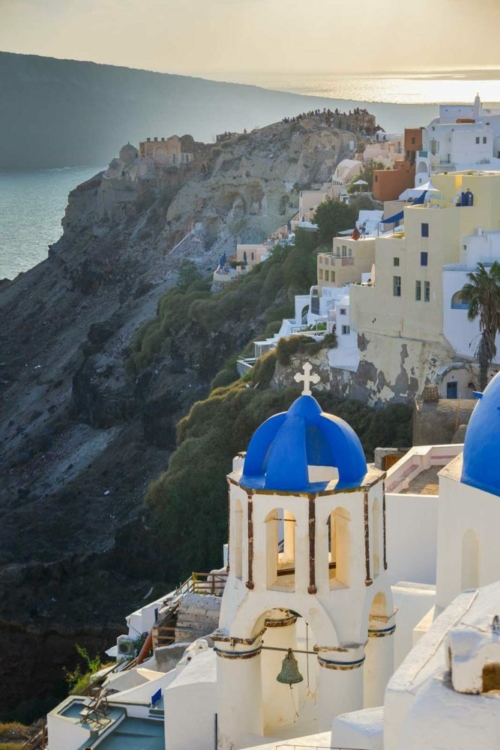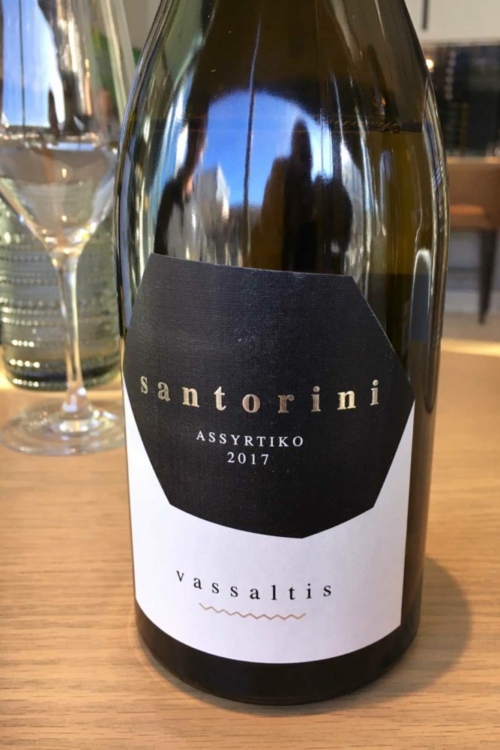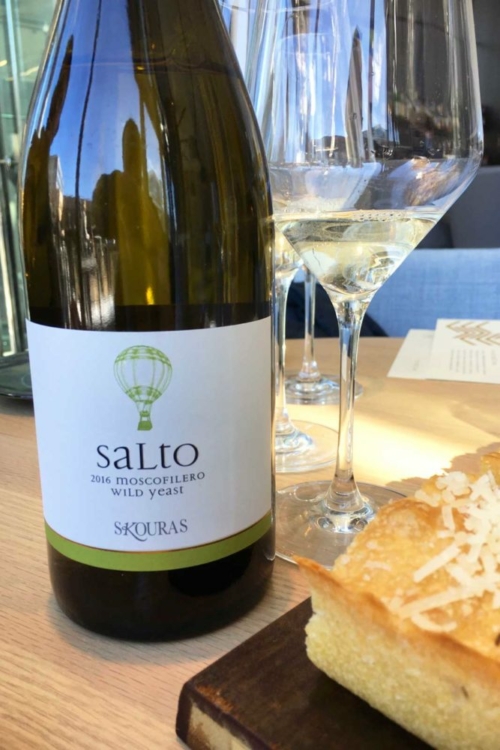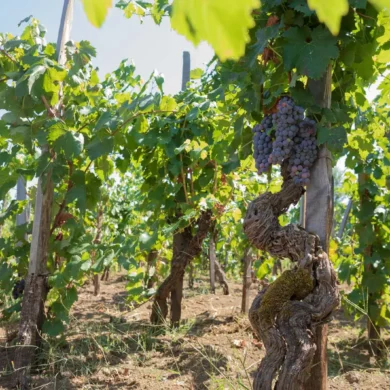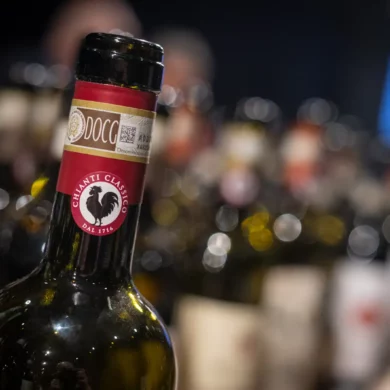On a cold, snowy night in a Colorado mountain town this past January, my friend Mike and I ducked into an Asian noodle bar and ordered dinner along with a Greek wine — a bottle of 2017 Santo Winery Assyrtiko from Santorini.
Now Colorado’s mountain towns are not a backwater, nor have they been for some time. Ten years ago, there may have been an Asian noodle bar in this particular mountain town. But a Greek wine on the list? I doubt it. There would have been sake, Oregon Pinot Gris, German Riesling, a white Burgundy … maybe something from Alsace. But such is the state of wine in the world today: unlikely combinations, unfettered curiosity, global reach to all corners of the globe. I love it.
Another aspect of the wine world today that differs from “back then?” Instagram. I posted about it, and the wine’s Colorado sales rep — Matt Reilly of Diamond Wine Importers — connected with me about it. He was happy to see I enjoyed it, and a few weeks later, we set up lunch. (Now look what has happened: I’ve written a 1,700-word article).
What I discovered about Greek wine from this focused, single-portfolio tasting, was this: I need to pay a helluva lot more attention to Greek wine. Especially since I love Italian wine.
Is Greece a Mini-Italy? Or Is Italy a Mega-Greece?
The similarities are abundant. Greece lays claim to roughly 300 indigenous varieties, although the exact number is still being contested. For me, tasting through a flight of Moschofilero, Malagousia, Liatiko and Xinomavro was like starting from scratch. What is this flavor? Where is my reference? How do I even pronounce this? I found it thrilling. Add to this an abundance of microclimates and a mosaic of regional identities among winemakers, and you have a subject matter that could occupy a lifetime of study.
However, the sinews of history that connect the two nations reveal a deeper, more meaningful compatibility. Between 800 and 600 BCE, the Greeks colonized Puglia, Basilicata, Calabria, Campagna and Sicily, bringing grapes and more advanced viticultural techniques with them. They even referred to this new land as Oenotria — the land of vines.
Fast-forward a few centuries, and the inverse became true. During the height of the Roman Empire, the Romans held Greek wines in high regard.
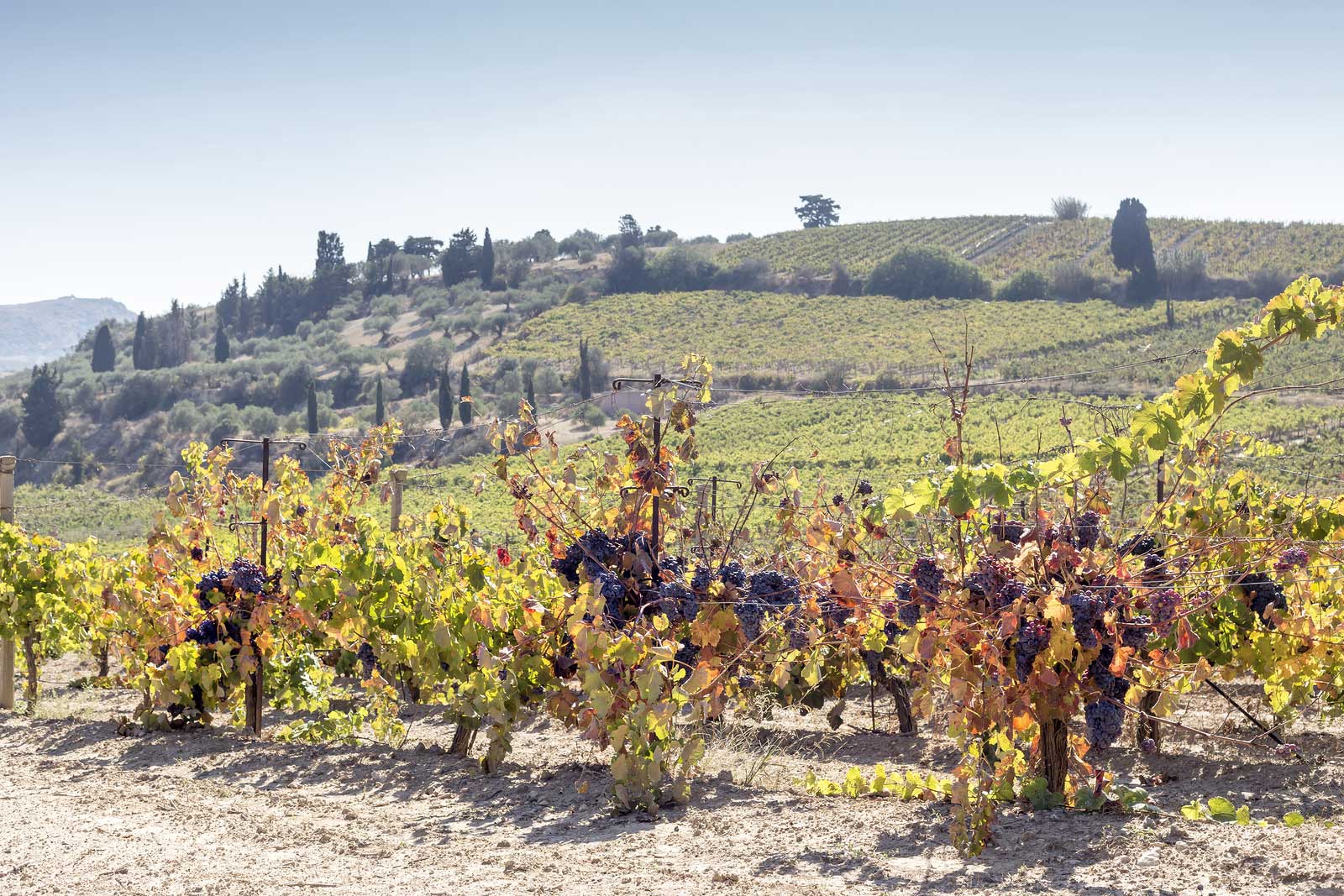
Because of this, I find the whole landscape of Greek wine intriguing. What have I been missing? What should I be drinking next? And what will we be talking about 10 years from now? People working in the wine industry, especially sommeliers, have been “woke” to Greek wines for some time now. But consumers have yet to make them a smash hit, probably because the barrier to entry — i.e. education on grape varieties and regions — is so high.
Because of this, I think Greek wines are at the perfect crossroads for modern-day wine lovers: Quality is steadily improving, yet they remain reasonably priced. And honestly, that’s something I can’t say for a lot of Italy’s premier wine regions at the moment.
Tasting Impressions
All of the wines below are from Diamond Wine Importers, a company that has specialized in Greek wines since 1992. Not all of the wines that were poured for me are listed, just the highlights. Several other importers specialize in Greek wines, and a few of the large importers — like Winebow — also have a portfolio. So, I have a lot of reaching out to do for future coverage. However, Diamond Wine Importers works with some of the more prestigious Greek wineries, such as Domaine Sigalas, Santo Wines and Kir-Yianni Estate. So it was a great place to start.
The Whites
Let’s start with the Assyrtiko from Santorini.
Santorini used to be an island volcano known as Thera until it blew itself up in the mid-second millenium BCE. The Minoan Eruption, as it is known, remains one of the most cataclysmic volcanic eruptions in human history. A majority of what remains of the volcano is a large apostrophe-shaped island, whose southern half is blanketed with vineyards. Here, Assyrtiko vines are trained in basket-like rings to protect them from the wind and heat. Their roots have never been bothered by phylloxera because of the volcanic soil that is mostly devoid of organic matter.
All of this serves as a background for these wonderfully mineral white wines. The Santo Wines Santorini Assyrtiko (★★★★ 3/4) — which started this all back in January — was an impressive wine, characterized by Chablis-like aromas recalling green apples, white flowers and vivid citrus. But it was the biting, mineral texture that stood out, a clear suggestion of its volcanic origin. It paired surprisingly well with the mushroom-laden, umami-bomb of my ramen noodles.
I was also impressed by the 2017 Vassaltis Santorini Assyrtiko (★★★★ 3/4) for the distinctive aromas of peppercorn and fennel that it seemed to add to the mix. Sprightly and flinty on the palate, it would be a perfect fit for baked halibut or marinated sardines.
Moving beyond Assyrtiko, Matt also poured for me the 2016 Domaine Skouras “Salto” Moscofilero Wild Yeast (★★★★ 3/4). “If only it were summer right now,” I wrote in my notes back then.
Fortunately, summer is pretty much here now, and this wildly beautiful, low-alcohol wine made from the Moschofilero grape (the common spelling) is poised for some serious patio sipping. There was a freshness to the nose that I could only describe as “green honeycomb” — like a waxy-sweetness inflected with tomato leaf or something — and it boasted an illusory saltiness like a Rias Baixas Albariño. Brilliant stuff, and at $16 or so, it is an excellent value.
The Reds
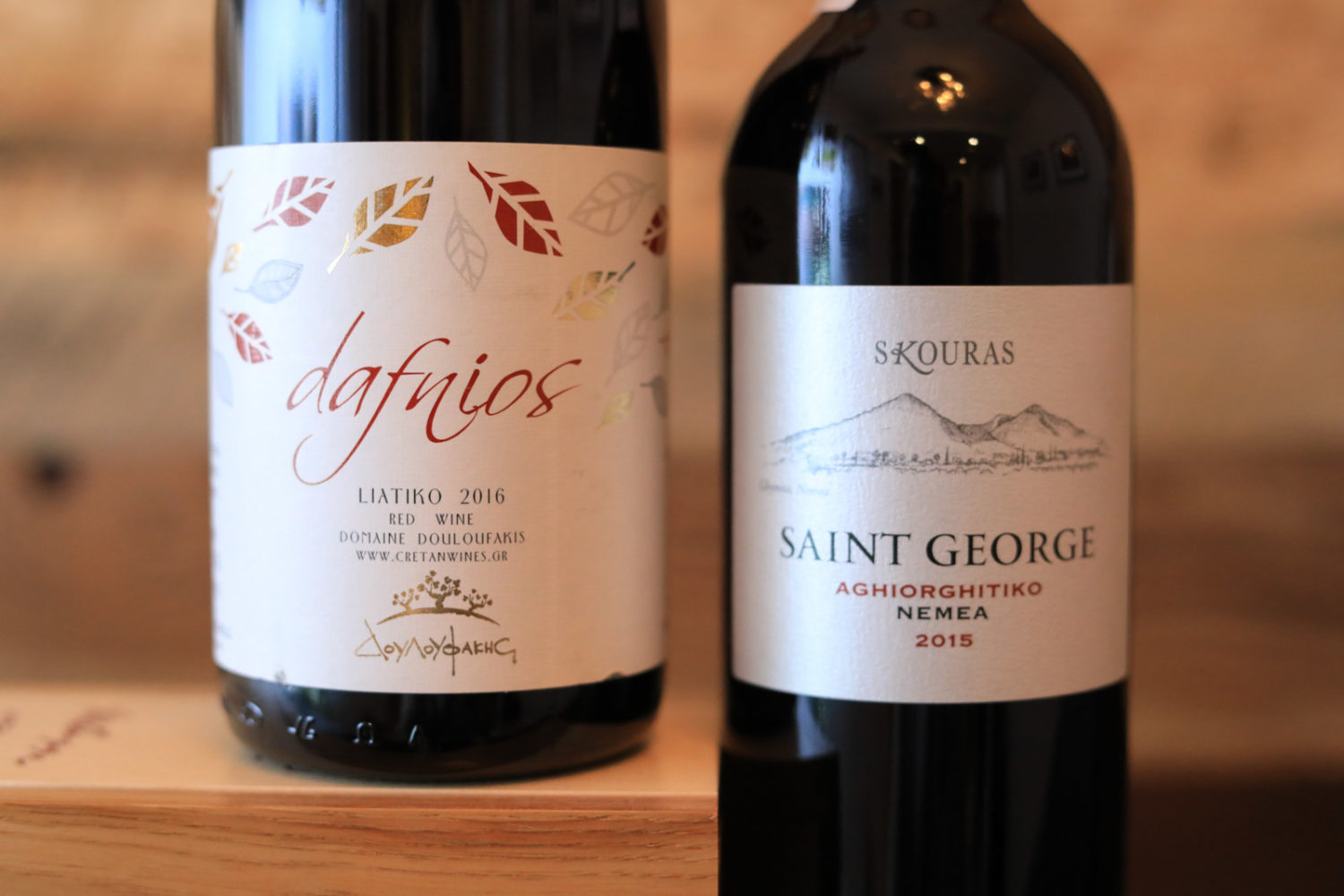
Of all the wines I tried this round, the Domaine Douloufakis “Dafnios” Liatiko (★★★★ 1/2) rewired my senses the most. Hailing from Crete’s village of Dafnes, the wine is made with 100% Liatiko, a rare, black-skinned variety that is a specialty of Crete. Despite the grape’s darkness, its pigment is stubborn at extraction, and the wines tend to be paler in color.
With the aromas, I fumbled for references: there were certainly notes reminiscent of red currants and autumn leaves, but also plush strawberries and … pizza crust? Maple syrup? (I know: that got weird). But I like a challenge every now and then, and this wine certainly demands a revisit, with a light body, crisp minerality and tannic grip. The power and verve of the wine is deceiving, too. It sneaks up on you.
The 2015 Domaine Skouras “Saint George” Aghiorghitiko Nemea (★★★★ 1/2) was another surprise. The Aghiorghitiko grape (which translates as Saint George) functions as a character actor in the Greek wine scene. A versatile conformist, it goes where a winemaker wants it to. At Domaine Skouras in the Nemea wine region of the Peloponnese, Aghiorghitiko seems to play the part of a Bordeaux-blend rival in disguise, with tones reminiscent of black raspberry, plums and graphite. The aromas were mild, and less generous than the fruit and acidity was on the palate. Mildly tannic and medium bodied, the wine did a lot of hinting, but not much revealing. A candidate for more aging? I wondered.
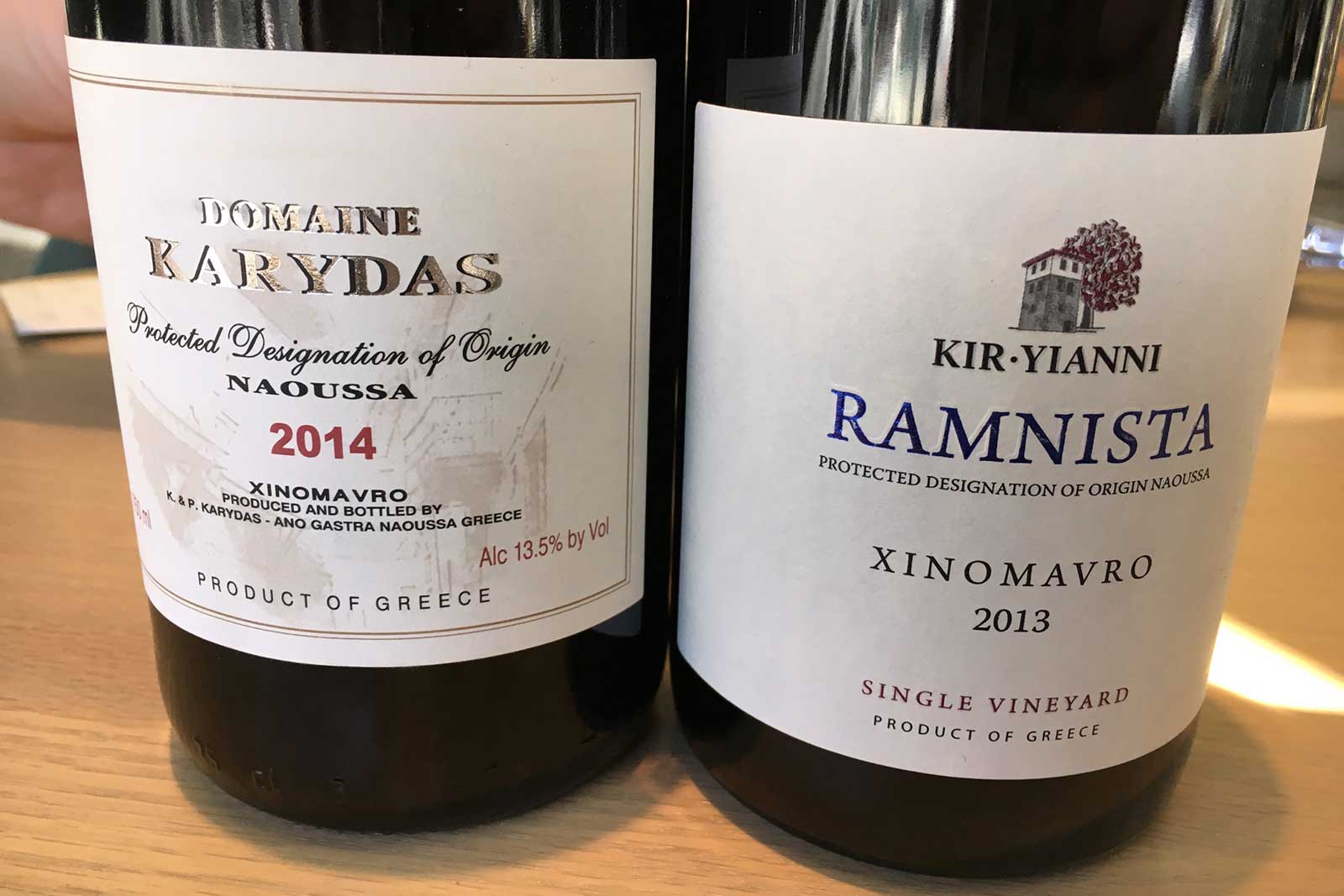
Lastly, I sampled two Xinomavro wines. To revisit my earlier point, the name of this grape derives from the words “sour” and “black” — two words that Italian wine lovers are intimately familiar with. Whether its the pungent acidity and sour-cherry tones of a Barbera d’Asti, or the numerous black-grape varieties of the South, Xinomavro seems to have a mystical kinship with the wines I’m already drinking.
This grape is tannic, intricate, earthy and it demands time in oak and obsessive care in the vineyard. If that sounds like a certain diva from Piedmont, you are not alone. The comparisons to Nebbiolo are apt and numerous. But I found its tones to also resemble a hard-edged Côte-Rotie or a Syrah from the Yorkville Highlands in California. In other words, pass the black olives.
We started with the 2013 Kir-yianni Estate “Ramnista” Xinomavro (★★★★ 1/2), a wine that saw 18 months in a variety of oak casks with six months in bottle (it wasn’t the latest vintage). Potent on the nose, with tones recalling blackberries and forest mushroom, I loved how its duality of savory and juicy sensations lent the wine momentum across the palate. But it wasn’t the best wine of the tasting.
Nope, that would be Domaine Karydas‘ only wine, a single-vineyard Xinomavro (★★★★★) from the Macedonia region. We drank the 2014 vintage and it conjured a canvas of all-black tones: dried black cherries, black licorice, tar, Kalamata olives and tobacco. The wine was assertive and forceful on the palate, with tannins that seemed to take up residence on my gums. I thought it was an absolute stunner, and it clinched my fascination with a country that I will no longer neglect in my wine studies.
Expanding Opening a Bottle’s Coverage
As a wine writer, I only want to write about wines in depth. I’d rather not chase trends, and I certainly won’t feign expertise on places I have no immediate plans to visit.
(Furthermore, as a human being with dental bills and a functional liver, I can only drink so much wine).
Because of this, I’ve opted to specialize in Italian and French wines, with a few by-the-glass holidays to Spain, Germany and Austria. I’ve carved out a beat, and while I’ve lost some readers who prefer New World wines, the overall effect has been an improved website (and, oddly enough, a net gain on traffic).
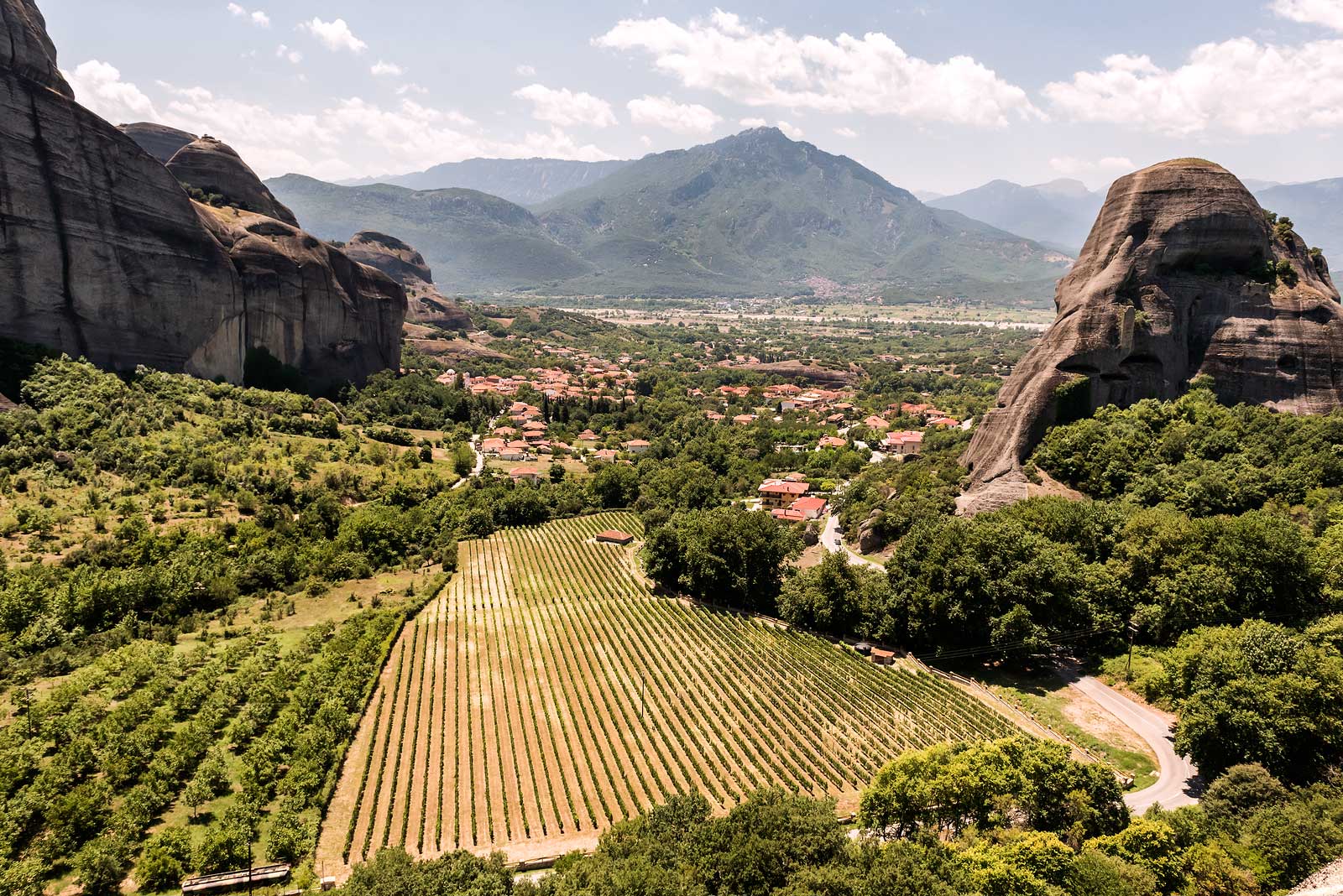
But all of this has me thinking: What would it take to expand my beat, and where would I go with it?
I want to be meticulous about pursuing wines that fit the style of this site: food-friendly, a good value (or a worthy splurge), and most importantly, wines of distinct origin. Wines that taste like somewhere.
The answer seems to be Greece.
So let me also ask you this: How thirsty for Greek wine coverage are you? Would you rather see stories about Austria, Germany or Spain? If you were my editor, where would you send me? I’m always eager to hear from my readers. Leave a comment below if you have a take.
Ευχαριστώ! (That means ‘thanks’).
Note: Wines for this article were provided by Diamond Wine Imports, but I maintained editorial discretion throughout. Learn more about my editorial and sample policy.
